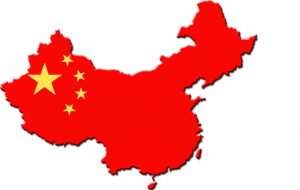Chinese may find it Difficult to keep up the Momentum

INN/Gwalior, @infodeaofficial
China, which is the world’s 2nd largest economy, faces some headwinds this year as the effects of deleveraging and industrial capacity cuts kick in, and those factors are beginning to show up in the data with the cooling of the property market and uncertainty in the trade.
Outlook policymakers may refrain from tightening too aggressively to keep growth humming.
Orders for infrastructure Materials and equipment have helped industrial output to recover faster in China than most places emerging from COVID-19 lockdowns, but further expansion will be hard to attain without stronger broad-based demand and exports.
Prices of Copper and steel have surged and share prices for Chinese blue chips struck five-year highs As state-funded Infrastructure Projects drove up production of cement, steel, and non-ferrous metals.
Railway investment, for example, soared 11.4% in April to June from a year earlier versus a 21% Drop in the first quarter. Industries also gained from pent-up demand for autos and electronics.
The property sector, a pillar of growth, also showed signs of rebounding, with real estate investment expanding and sales quickening.

China’s factory Gate prices are still in deflation territory this year may have turned positive on a monthly basis said, Yating Xu, Who is also senior economist at IHS Market, Sign of recovering demand for manufactured goods.
The optimism also leads investment banking to forecast no more policy interest rate cuts from the central bank for the rest of the Year.
Both foreign and domestic demand appear to have softened, Julian Evans – Pritchard who is a China economist capital economics Limited in Singapore wrote in a note that a few factors that s Steel same to have a defied this slowdown in economic activity.
But the strength in These areas likely won’t last given that policy tightening is set to further weigh on infrastructure and property investment in the coming months.
President XI Jinping also stated that for now, this is more likely to be pursued through targeted measures rather than tightening of the overall monetary stance.
Services output index rose 8.3% in July, slowing from 8.6% in June.
New energy vehicle output rose 48.6 % on year up from 29.2 percent in June.
Fixed asset investment in ferrous and nonferrous metal melting and processing fail 11.8% and 5.2% year on year respectively.
The surveyed jobless rate in urban areas was about 5.1 % on 10 July.
Property development investment will slow to a gradual pace, NBS said.




